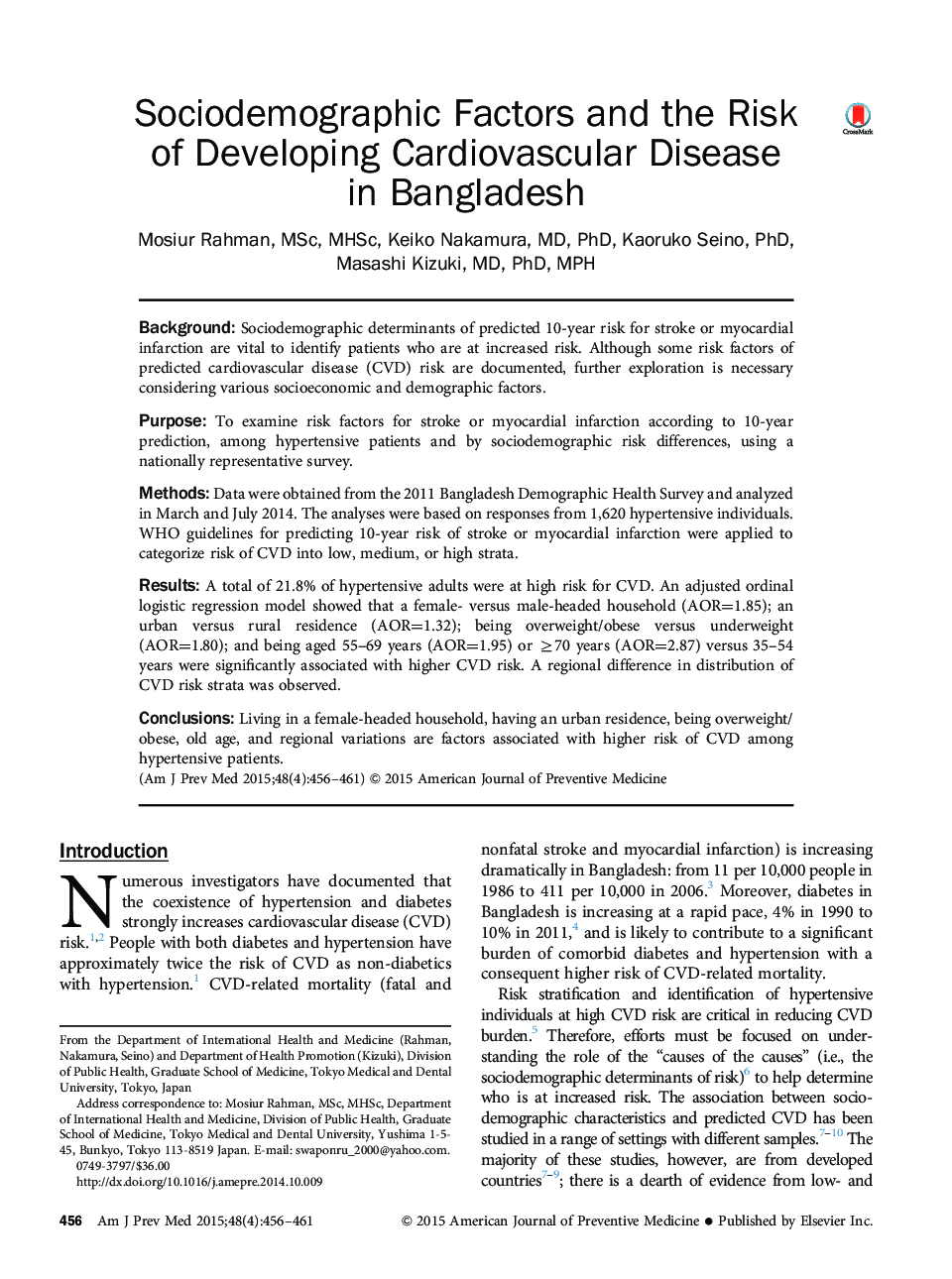| کد مقاله | کد نشریه | سال انتشار | مقاله انگلیسی | نسخه تمام متن |
|---|---|---|---|---|
| 6237853 | 1608642 | 2015 | 6 صفحه PDF | دانلود رایگان |
BackgroundSociodemographic determinants of predicted 10-year risk for stroke or myocardial infarction are vital to identify patients who are at increased risk. Although some risk factors of predicted cardiovascular disease (CVD) risk are documented, further exploration is necessary considering various socioeconomic and demographic factors.PurposeTo examine risk factors for stroke or myocardial infarction according to 10-year prediction, among hypertensive patients and by sociodemographic risk differences, using a nationally representative survey.MethodsData were obtained from the 2011 Bangladesh Demographic Health Survey and analyzed in March and July 2014. The analyses were based on responses from 1,620 hypertensive individuals. WHO guidelines for predicting 10-year risk of stroke or myocardial infarction were applied to categorize risk of CVD into low, medium, or high strata.ResultsA total of 21.8% of hypertensive adults were at high risk for CVD. An adjusted ordinal logistic regression model showed that a female- versus male-headed household (AOR=1.85); an urban versus rural residence (AOR=1.32); being overweight/obese versus underweight (AOR=1.80); and being aged 55-69 years (AOR=1.95) or â¥70 years (AOR=2.87) versus 35-54 years were significantly associated with higher CVD risk. A regional difference in distribution of CVD risk strata was observed.ConclusionsLiving in a female-headed household, having an urban residence, being overweight/obese, old age, and regional variations are factors associated with higher risk of CVD among hypertensive patients.
Journal: American Journal of Preventive Medicine - Volume 48, Issue 4, April 2015, Pages 456-461
